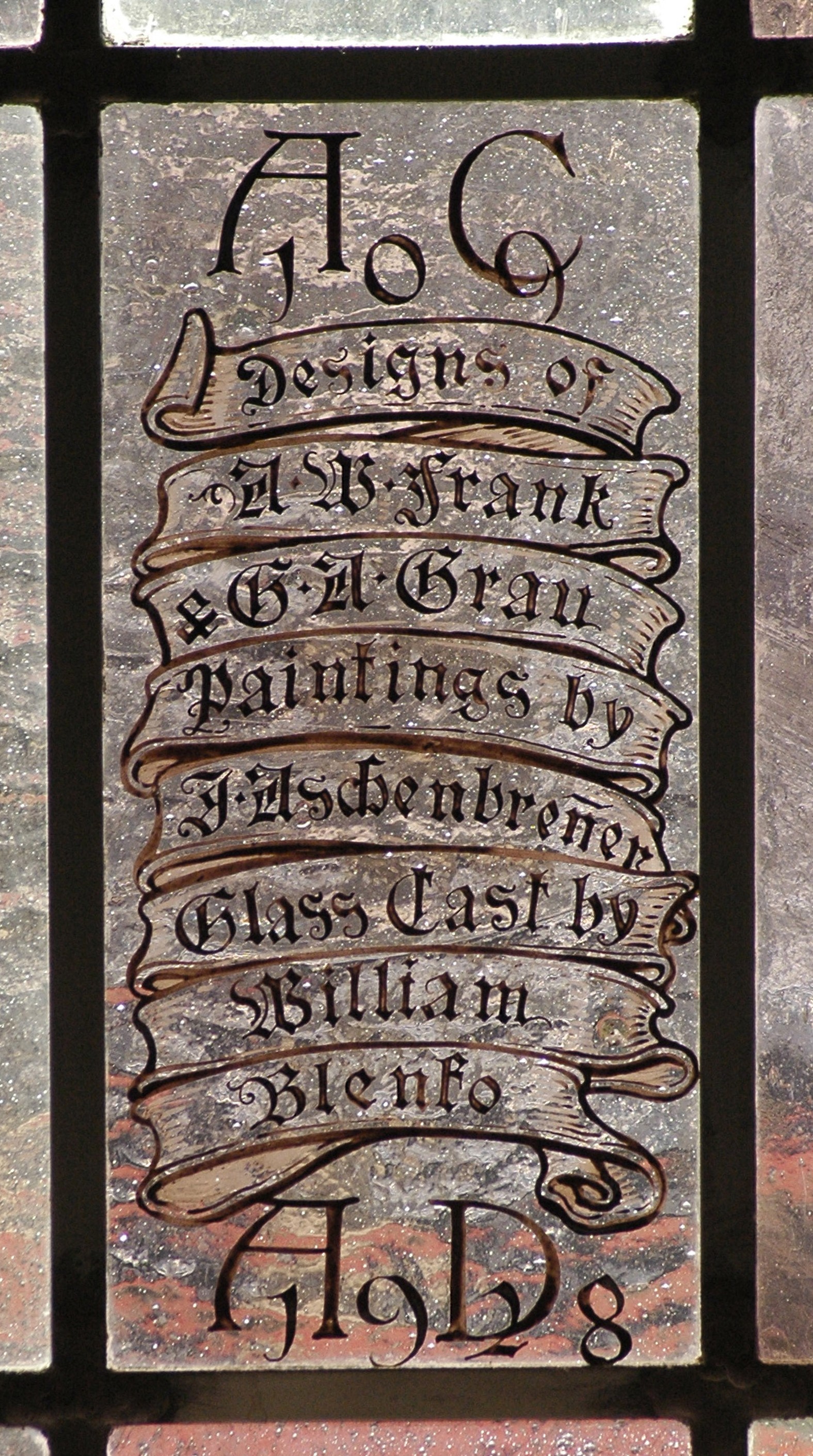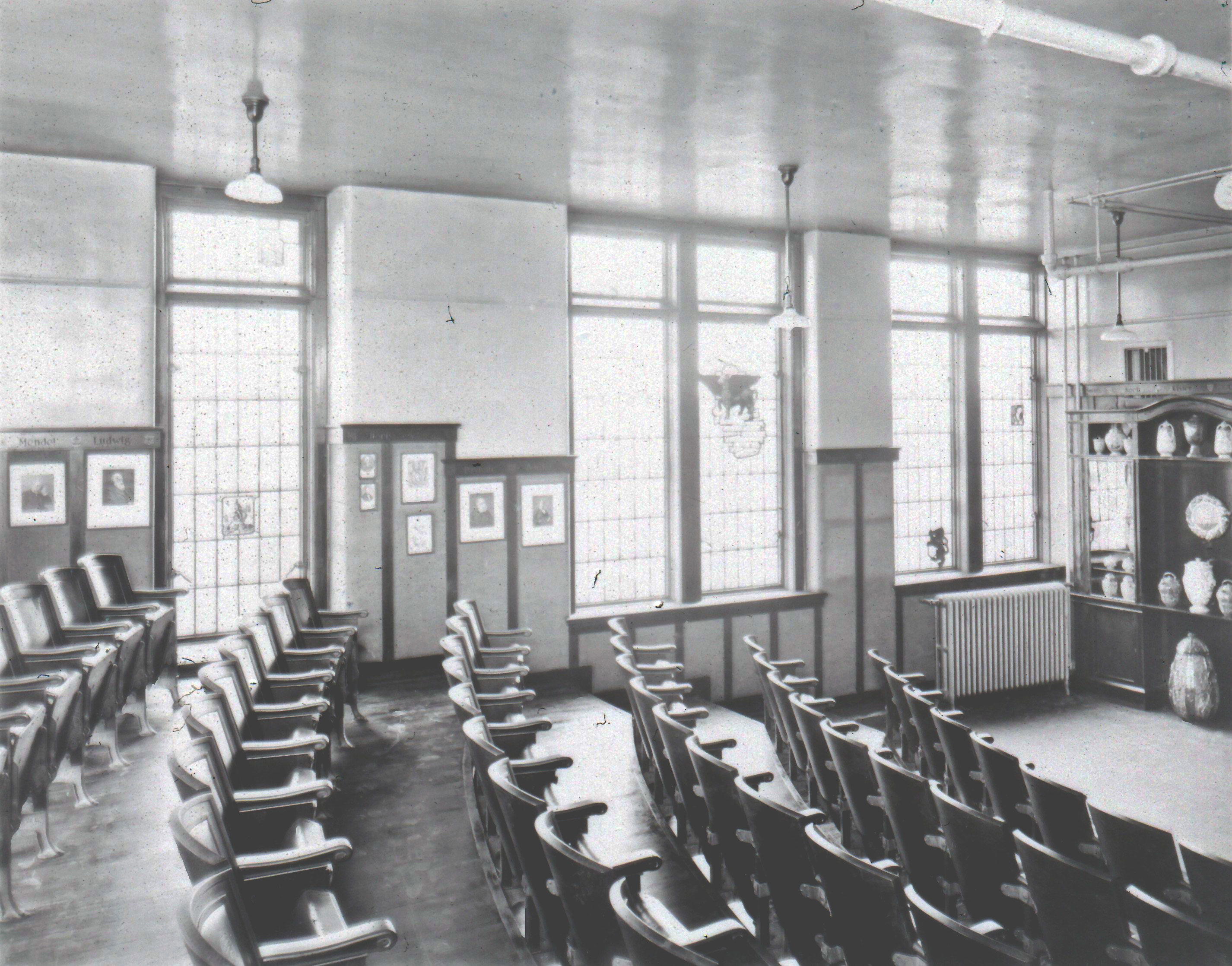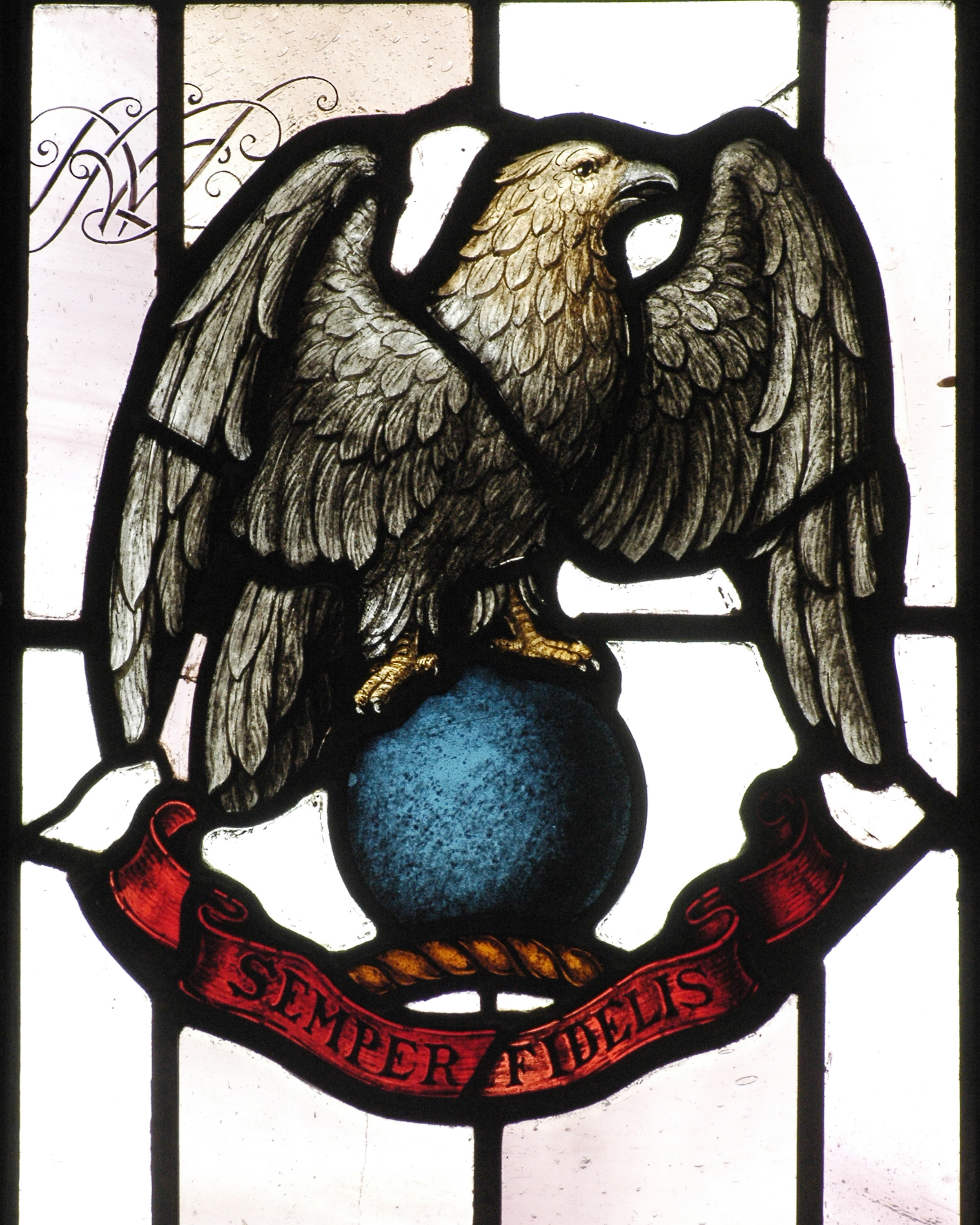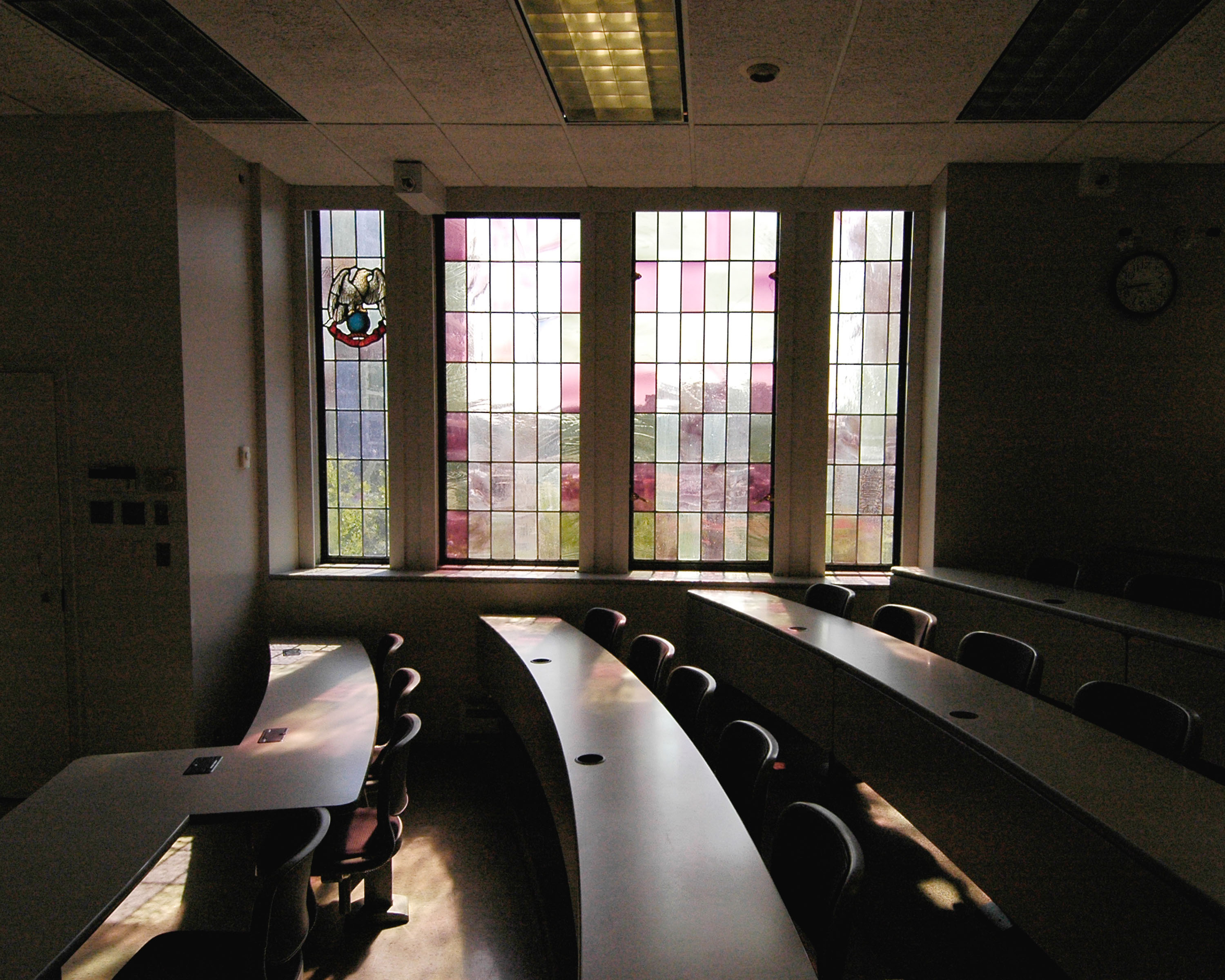By: Nathan Hood
In the University of Cincinnati’s modern- looking Health Professions building, the students in Room 231 have the odd privilege of enjoying several beautifully old, stained glass windows. The windows are reminiscent of a time before the renovations, when the building was the University’s College of Medicine. In the past, one of these rooms served as the physiology lecture hall, initially overseen by Dr. Martin H. Fischer. That intriguing space once featured the entire Cantagalli Pharmacy installation, numerous symbolic engravings, and leather orchestra chairs; but the stained glass windows of that old classroom and the neighboring library are an interesting story by themselves.

Inscription reads: “A C 109 /
Designs of A B Frank & G A Grau /
Paintings by J Aschenbrener /
Glass Cast by William Blenko /
A D 1928.”
The widow of Herman Lackman, Charlotte Lackman, purchased the colorful windows for the University. Before and even after his death, Herman Lackman was a well-known and prominent Cincinnatian perhaps best known for his German brewing company. And while Dr. Fischer likely conceptualized the general ideas for each window along with other elements of these rooms, the physical creation of these works of stained glass was evidently a collaborative effort.
Dr. Fischer claimed his intent was to evoke “the Middle Ages” and to create a space that was “not only a tribute to … medicine, … [but also] an inspiration to students and doctors of today.” The windows were an important part of his vision and the images on the stained glass presumably have historical as well as symbolic relevance to medicine. In any case, it is clear that Dr. Fischer wanted “an educational effect, not a holy effect.”

Close-up. “Winged Bull of St. Luke” was restored in celebration by the class of 1947. This photo serves as a link to encyclopedic information on St. Luke.
On one window the winged bull of St. Luke the Physician, one of the four Evangelists, is pictured adjacent to the physician’s creed: “Observation / Reason / Human Understanding / Courage / These Make The Physician.”
A biblical allusion to the legend of St. George slaying the dragon is pictorially represented on another window. St. George’s courageous act of destroying a painful evil and preserving a city’s Christian goodness may be symbolically related to the modern physician’s daily act of rescuing the living from disease and illness.

Close-up.
“St. George and the Dragon” was also restored through the generosity of Dr. William H.L. Dornette, MD, in memory of Clell C. Gray, Jr., MD.)
This photo serves as a link to encyclopedic information on St. George.
Another window has the image of an eagle perched atop a globe, adjacent to a ribbon with the popular Latin phrase, semper fidelis, meaning “always faithful.” It is tempting to interpret this combination as a reference to the United States Marines; however, the absence of an anchor is inconsistent with contemporary military iconography. Despite the symbolic ambiguity, the Latin phrase alone easily has many applications, including those that are medical. “Always faithful” could mean … to the patient, professional ethics, job requirements, etcetera.
A rampant lion and shield – perhaps chosen as symbols of courage, strength, and protection – adorns one window; a rooster and horse ornament another. Both these and many of those mentioned here have been currently preserved for posterity at The Winkler Center for the History of the Health Professions.
For more information, to view a collection, or for a tour of The Winkler Center, please call 558-5120 or email chhp@uc.edu to schedule an appointment.

Close-up. The ‘Horse’ and ‘Rooster’ are on display at The Winkler Center. This window was originally installed in the Charlotte Fischer Library.




